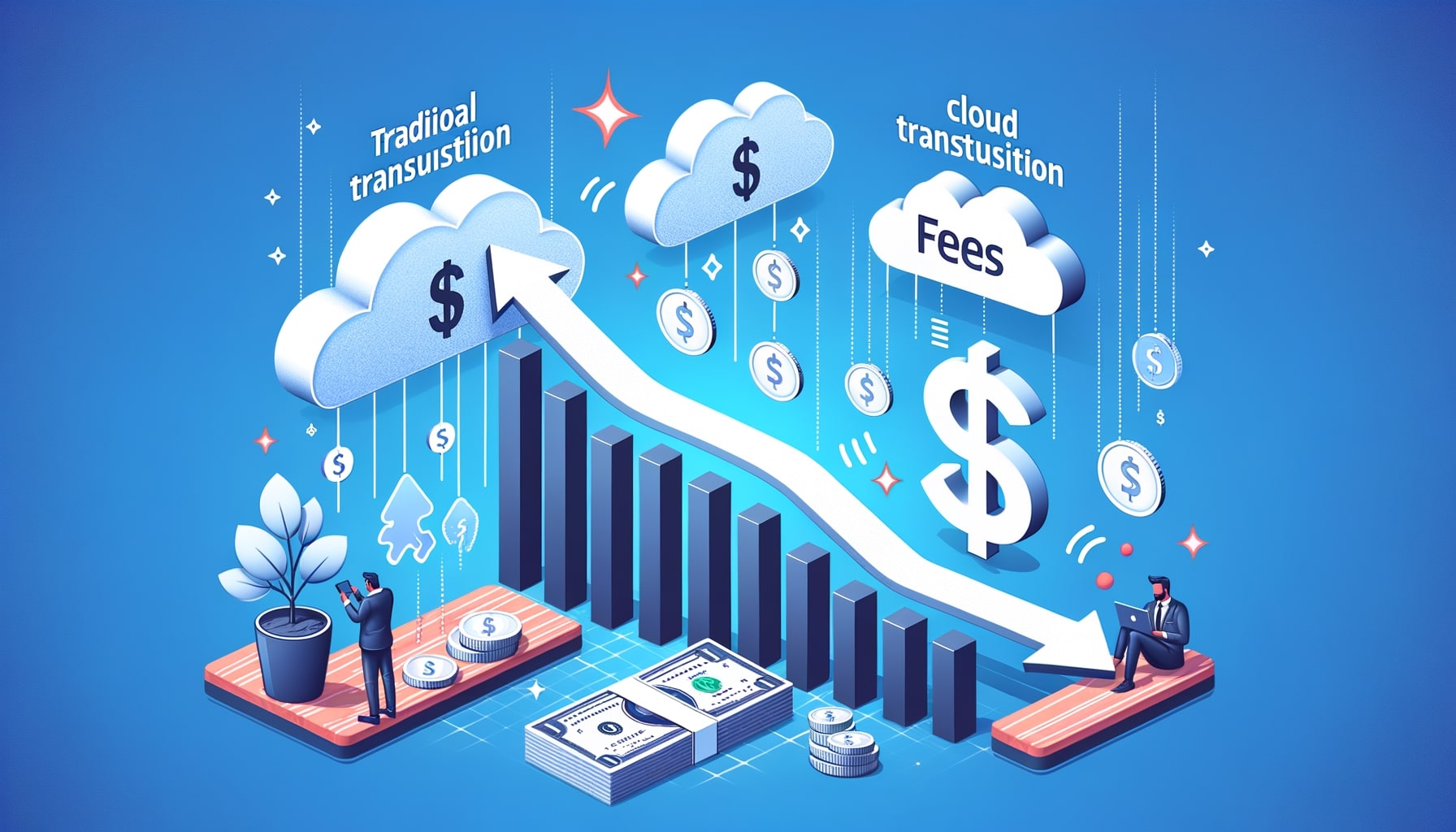The Role of Cloud Payments in Digital Transformation
In today’s rapidly evolving digital landscape, businesses are constantly seeking ways to stay ahead of the competition and meet the ever-changing needs of their customers. One of the key drivers of this transformation is the adoption of cloud payments. Cloud payments, also known as cloud-based payment solutions, have revolutionized the way businesses handle financial transactions, offering numerous benefits and opportunities for growth. In this article, we will explore the basics of cloud payments, their role in driving digital transformation, and the various advantages they bring to businesses.
Exploring the Basics: What are Cloud Payments and How Do They Work?
Cloud payments refer to the process of conducting financial transactions, such as payments, through cloud-based platforms. Unlike traditional payment methods that rely on physical infrastructure, cloud payments leverage the power of the internet and cloud computing to securely process transactions. This means that businesses can accept payments from customers anywhere, anytime, and on any device with an internet connection.
The process of cloud payments typically involves three main components: the customer, the merchant, and the payment service provider (PSP). The customer initiates the payment by providing their payment details, such as credit card information, through a secure online portal. The merchant then sends this information to the PSP, which securely processes the payment and transfers the funds to the merchant’s account. This seamless and efficient process eliminates the need for physical payment terminals or manual handling of payment information.
The Benefits of Cloud Payments in Driving Digital Transformation
Cloud payments play a crucial role in driving digital transformation for businesses of all sizes and industries. By embracing cloud-based payment solutions, businesses can unlock a wide range of benefits that contribute to their growth and success. Let’s explore some of these benefits in detail.
- Enhanced Security and Compliance: One of the primary concerns for businesses when it comes to accepting payments is security. Cloud payments offer robust security measures, such as encryption and tokenization, to protect sensitive customer data. By storing payment information in secure cloud servers, businesses can minimize the risk of data breaches and fraud. Additionally, cloud payment solutions often come with built-in compliance features, ensuring businesses adhere to industry regulations and standards.
- Streamlined Operations: Traditional payment methods often involve manual processes, such as handling cash or manually entering payment information. This can be time-consuming and prone to errors. Cloud payments automate these processes, reducing the need for manual intervention and streamlining operations. With cloud-based payment solutions, businesses can automate tasks like invoicing, reconciliation, and reporting, freeing up valuable time and resources for other critical business activities.
- Seamless Customer Experiences: In today’s digital age, customers expect convenience and ease of use when making payments. Cloud payments enable businesses to offer seamless and frictionless payment experiences to their customers. Whether it’s through mobile apps, online portals, or contactless payment options, cloud-based payment solutions provide customers with a variety of convenient payment methods. This not only enhances customer satisfaction but also increases the likelihood of repeat business and customer loyalty.
- Data Analytics for Business Growth: Cloud payment solutions generate a wealth of valuable data that businesses can leverage to drive growth and make informed decisions. By analyzing payment data, businesses can gain insights into customer behavior, preferences, and trends. This information can be used to personalize marketing campaigns, optimize pricing strategies, and identify new business opportunities. With cloud payments, businesses can harness the power of data analytics to stay ahead of the competition and drive business growth.
Enhancing Security and Compliance with Cloud Payments
Security and compliance are critical considerations for businesses when it comes to accepting payments. Cloud payments offer robust security measures that help businesses protect sensitive customer data and minimize the risk of data breaches and fraud.
One of the key security features of cloud payment solutions is encryption. Encryption involves encoding payment data in a way that can only be decrypted by authorized parties. This ensures that even if the data is intercepted, it remains unreadable and unusable to unauthorized individuals. Cloud payment solutions use advanced encryption algorithms to protect payment information during transmission and storage, providing businesses and customers with peace of mind.
Another security measure offered by cloud payment solutions is tokenization. Tokenization involves replacing sensitive payment data, such as credit card numbers, with unique tokens. These tokens are meaningless to anyone who does not have the corresponding decryption key. By tokenizing payment data, businesses can significantly reduce the risk of data breaches. Even if a token is intercepted, it cannot be used to make fraudulent transactions without the decryption key.
In addition to security, cloud payment solutions also help businesses ensure compliance with industry regulations and standards. Many cloud payment providers offer built-in compliance features that help businesses adhere to Payment Card Industry Data Security Standard (PCI DSS) requirements. PCI DSS is a set of security standards designed to protect cardholder data and reduce the risk of fraud. By using a PCI-compliant cloud payment solution, businesses can simplify the process of achieving and maintaining compliance, saving time and resources.
Streamlining Operations: How Cloud Payments Improve Efficiency
Traditional payment methods often involve manual processes that can be time-consuming and prone to errors. Cloud payments streamline these operations, improving efficiency and freeing up valuable time and resources for businesses.
One of the key ways cloud payments improve efficiency is through automation. With cloud-based payment solutions, businesses can automate tasks such as invoicing, reconciliation, and reporting. This eliminates the need for manual intervention, reducing the risk of errors and saving time. For example, instead of manually entering payment information into a system, businesses can integrate their cloud payment solution with their accounting software, allowing payments to be automatically recorded and reconciled.
Cloud payments also offer real-time transaction processing, enabling businesses to receive payments faster. Unlike traditional payment methods that may involve delays in processing and settlement, cloud payments facilitate instant authorization and settlement of transactions. This means businesses can access funds more quickly, improving cash flow and liquidity.
Furthermore, cloud payment solutions often come with advanced reporting and analytics capabilities. Businesses can generate detailed reports on payment activity, revenue, and customer behavior, providing valuable insights for decision-making. These insights can help businesses identify trends, optimize pricing strategies, and make data-driven decisions to drive growth.
Enabling Seamless Customer Experiences through Cloud Payments
In today’s digital age, customers expect convenience and ease of use when making payments. Cloud payments enable businesses to offer seamless and frictionless payment experiences to their customers, enhancing customer satisfaction and loyalty.
One of the key advantages of cloud payments is the ability to offer a variety of payment methods. Cloud-based payment solutions support a wide range of payment options, including credit cards, debit cards, mobile wallets, and contactless payments. This allows businesses to cater to the preferences of their customers and offer a seamless payment experience across different channels and devices.
Mobile payments, in particular, have gained significant popularity in recent years. With cloud payments, businesses can offer mobile payment options through dedicated mobile apps or mobile-optimized websites. This allows customers to make payments on the go, using their smartphones or tablets. Mobile payments offer convenience and flexibility, enabling customers to make purchases anytime, anywhere.
Cloud payments also support recurring billing and subscription-based models. Businesses can set up automated recurring payments for services or subscriptions, eliminating the need for customers to manually make payments each time. This not only improves convenience for customers but also ensures a steady and predictable revenue stream for businesses.
Furthermore, cloud payment solutions often come with built-in features for customer relationship management (CRM). Businesses can store customer payment information securely in the cloud, making it easier to manage customer accounts and provide personalized experiences. For example, businesses can offer loyalty programs, discounts, or targeted promotions based on customer payment history and preferences.
Leveraging Data Analytics for Business Growth with Cloud Payments
Data analytics plays a crucial role in driving business growth and making informed decisions. Cloud payment solutions generate a wealth of valuable data that businesses can leverage to gain insights into customer behavior, preferences, and trends.
By analyzing payment data, businesses can identify patterns and trends that can inform marketing strategies and product development. For example, businesses can analyze customer payment preferences to determine which payment methods are most popular among their target audience. This information can then be used to optimize payment options and improve the overall customer experience.
Payment data can also provide insights into customer behavior and purchasing patterns. By analyzing transaction data, businesses can identify which products or services are most popular, which customers are the most valuable, and which marketing campaigns are the most effective. This information can help businesses tailor their offerings, target their marketing efforts, and allocate resources more effectively.
Furthermore, payment data can be used to identify potential fraud or security risks. By analyzing transaction patterns and anomalies, businesses can detect suspicious activities and take proactive measures to prevent fraud. This can help businesses protect their customers’ data and maintain a secure payment environment.
Cloud payment solutions often come with built-in reporting and analytics tools that make it easy for businesses to access and analyze payment data. These tools provide businesses with real-time insights and visualizations, allowing them to make data-driven decisions quickly and effectively.
Overcoming Challenges and Considerations in Adopting Cloud Payments
While cloud payments offer numerous benefits, businesses must also consider and address certain challenges and considerations when adopting cloud-based payment solutions.
One of the primary concerns for businesses is the security of customer data. With cloud payments, businesses are entrusting their customers’ payment information to third-party payment service providers (PSPs). It is crucial for businesses to carefully evaluate the security measures and compliance standards of their chosen PSPs. Businesses should ensure that their PSPs have robust security protocols in place, such as encryption, tokenization, and secure data storage.
Another consideration is the integration of cloud payment solutions with existing systems and processes. Businesses should assess the compatibility of their current systems, such as accounting software or e-commerce platforms, with the chosen cloud payment solution. Integration challenges can arise if the systems are not compatible or require significant customization. It is important for businesses to work closely with their chosen PSPs and IT teams to ensure a smooth integration process.
Businesses should also consider the scalability and flexibility of cloud payment solutions. As businesses grow and expand, their payment processing needs may change. It is important to choose a cloud payment solution that can scale with the business and accommodate future growth. Additionally, businesses should consider the flexibility of the solution in terms of supporting different payment methods, currencies, and countries. This is particularly important for businesses operating in global markets or targeting international customers.
Lastly, businesses should consider the cost implications of adopting cloud payment solutions. While cloud payments offer numerous benefits, there may be associated costs, such as transaction fees or subscription fees. It is important for businesses to carefully evaluate the costs and benefits of different cloud payment solutions and choose the one that aligns with their budget and business goals.
Frequently Asked Questions (FAQs) about Cloud Payments in Digital Transformation
Q.1: What is the difference between cloud payments and traditional payment methods?
Answer: Cloud payments leverage the power of the internet and cloud computing to securely process transactions, while traditional payment methods rely on physical infrastructure, such as payment terminals or cash handling.
Q.2: Are cloud payments secure?
Answer: Yes, cloud payments offer robust security measures, such as encryption and tokenization, to protect sensitive customer data. However, businesses should carefully evaluate the security measures of their chosen payment service providers (PSPs).
Q.3: Can cloud payments be integrated with existing systems?
Answer: Yes, cloud payment solutions can be integrated with existing systems, such as accounting software or e-commerce platforms. However, businesses should assess the compatibility and work closely with their chosen PSPs and IT teams to ensure a smooth integration process.
Q.4: Can cloud payments support different payment methods and currencies?
Answer: Yes, cloud payment solutions support a wide range of payment methods, including credit cards, debit cards, mobile wallets, and contactless payments. They can also support multiple currencies, making them suitable for businesses operating in global markets.
Q.5: What are the cost implications of adopting cloud payment solutions?
Answer: While cloud payments offer numerous benefits, there may be associated costs, such as transaction fees or subscription fees. Businesses should carefully evaluate the costs and benefits of different cloud payment solutions and choose the one that aligns with their budget and business goals.
Conclusion
Cloud payments have emerged as a powerful tool in driving digital transformation for businesses. By leveraging the power of the internet and cloud computing, businesses can enhance security, streamline operations, enable seamless customer experiences, and leverage data analytics for growth. However, businesses must also consider and address challenges and considerations, such as security, integration, scalability, and cost implications. With careful planning and evaluation, businesses can harness the full potential of cloud payments and stay ahead in today’s digital landscape.










